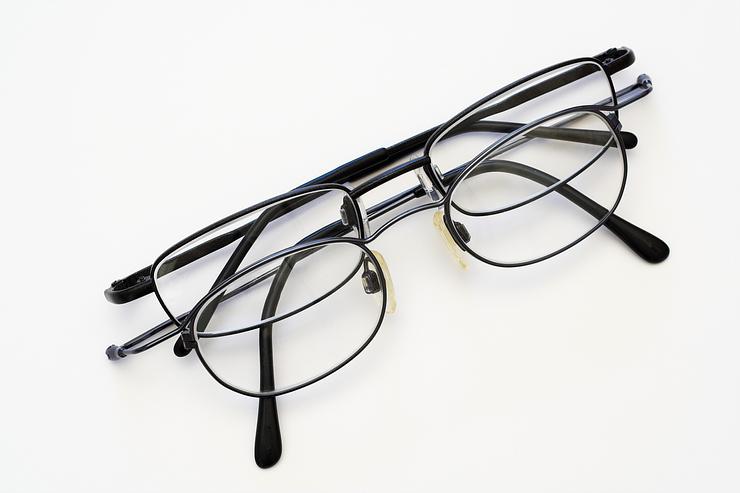Medically reviewed by Dr. Danielle Campbell
From the FYidoctors - Comox Valley
Top Causes of Double Vision Explained

Double vision, or diplopia, occurs when you see two images of a single object. This condition can stem from various issues, including corneal abnormalities, lens problems like cataracts, or muscle and nerve disorders affecting eye alignment. Monocular diplopia persists in one eye even when the other is closed, whereas binocular diplopia resolves when one eye is closed. If you experience double vision along with other symptoms such as pain, headache, or sudden changes in vision, it's crucial to consult an eyecare professional promptly for a thorough evaluation and appropriate treatment. Treatment for double vision might include corrective lenses, surgery, or other therapies depending on the underlying cause.
What is Double Vision?
Double vision is a condition where you see two images of a single object, either side-by-side, one above the other, or a mix of both. This happens when the eyes are misaligned and each eye sees the object location slightly differently. The brain then puts these two images together, resulting in the perception of double vision.
There are two main types of double vision:
- Monocular: Diplopia in only one eye, even when the other eye is closed.
- Binocular: Double vision that goes away when either eye is closed.
Why Does Double Vision Occur?
Double vision can stem from various issues affecting different parts of the eye or the systems controlling eye function. Let's explore some of the most common causes of double vision.
What Causes Double Vision?
- Cornea Problems: The cornea, the clear front surface of your eye, plays a crucial role in focusing light. Issues like astigmatism, where the cornea is asymmetrically shaped, dry eyes, or scars can distort vision and lead to diplopia.
- Lens Issues: The lens, situated behind the iris, also helps focus light onto the retina. As we age, the lens can become cloudy, forming a cataract. Cataracts are a common cause of double vision, particularly in older adults.
- Eye Muscle Problems: Each eye has six muscles that control its movement. Conditions like strabismus, where the eyes are misaligned, or systemic conditions, including Graves' Disease, can affect the extraocular muscles and cause double vision.
How to Identify Causes Based on Symptoms
The underlying cause of double vision can often be determined by the specific symptoms you experience. For example, if you have strabismus, you may notice that one eye appears to be misaligned or "wandering." This misalignment can lead to seeing double images.
Nerve problems can also cause diplopia. Conditions like diabetes can damage the nerves that control eye movement, resulting in double vision. Similarly, multiple sclerosis, an autoimmune disorder that affects the central nervous system, can disrupt the coordination of eye movements and cause diplopia.
Other symptoms that may accompany double vision can provide clues to the underlying cause:
- Double vision with eye pain or headache may indicate an issue with the muscles or nerves controlling eye movement.
- Blurred vision along with double vision could suggest a problem with the cornea or lens, such as cataracts.
- Sudden onset of double vision, especially with other symptoms like weakness, numbness, or slurred speech, could be a sign of a more serious condition like a stroke or brain tumor.
If you experience persistent double vision or any concerning symptoms, it's essential to consult with an eye care professional for a comprehensive evaluation.
How is Double Vision Diagnosed?
Diagnosing the cause of double vision typically begins with a comprehensive eye exam. During this exam, your eye doctor will assess your visual acuity, eye alignment, and eye movements. They may also use special lenses or prisms to measure the double vision.
Your medical history plays a crucial role in pinpointing the underlying cause of diplopia. Be sure to inform your eye doctor about any existing health conditions, such as diabetes or thyroid disorders, as well as any medications you are taking.
Depending on the suspected cause, additional tests may be necessary:
- Imaging tests like MRI or CT scans can help identify brain tumors, aneurysms, or other neurological issues.
- Blood tests can detect conditions like myasthenia gravis or giant cell arteritis.
- A detailed eye pre-test can assess for complications like color blindness, depth perception, and peripheral vision.
What Treatments are Available for Double Vision?
Treatment for double vision depends on the underlying cause. In some cases, such as with cataracts, surgery may be necessary to remove the clouded lens and replace it with an artificial one. Corrective lenses, like eyeglasses or contact lenses, can also help improve vision if the cause is related to a refractive error like astigmatism.
For muscle-related causes of double vision, treatment may involve:
- Eye exercises to strengthen and improve coordination of the eye muscles
- Prism lenses to realign the eyes and eliminate double vision
- Eye patches or special lenses to block vision in one eye
For causes related to systemic health, advanced imaging and medication may be required:
- Medications to treat underlying conditions like myasthenia gravis or multiple sclerosis
FAQ
What is the most common cause of double vision?
What neurological disorder causes double vision?
How do you know if double vision is serious?
What causes double vision in seniors?
Why do I wake up with double vision?
When should I worry about double vision?
How can I fix double vision naturally?

